Allion Labs
Lights that are perceived by the human eye are called visible light, which consists of seven light colors: red, orange, yellow, green, blue, indigo and violet, with wavelengths ranging from 380nm to 780nm. Such lights are a type of electromagnetic wave capable of transmitting energy and momentum through space, which is why you can feel the heat under the sun or get blinded by car headlights. Those are the cases where you receive energy from light.
Blue light is a type of visible light with a wavelength between 400nm and 500nm, and it comes with more energy. When high-intensity blue light enters a human eye through the cornea and passes the lens into the retina, it can cause corneal inflammation, dryness, cataracts, retinopathy, and other eye diseases.
There are many circumstances in our daily lives where LED products are applied. Taking the common LED bulbs and LED screens as an example, we can see in the following two spectrum graphs that the blue light emitted by LEDs is especially strong, which is the main cause of blue light hazards. In particular, LED screen products are viewed directly by our eyes, resulting in a very high risk of damage with long-term use.
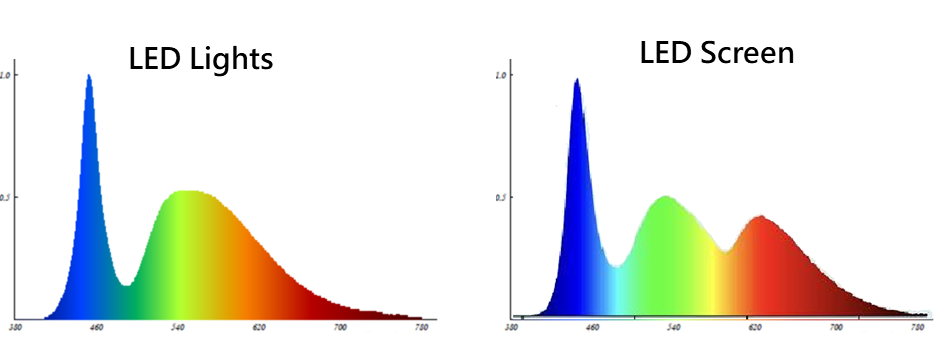
Since products with LED-backlit screens have been widely used in our daily lives, the danger of blue light has become a critical issue for all of us. Allion Labs offers several methods for the evaluation of blue light hazards, providing adequate assistance to manufacturers during product development and application.
When activated, most eye protection modes reduce the blue light energy. However, the brightness would also dim along with blue light. As we can see from the case below, the brightness drops by up to 29.4% in those modes. With a lower brightness, the reading experience may be severely impacted, which is a critical point of the product.
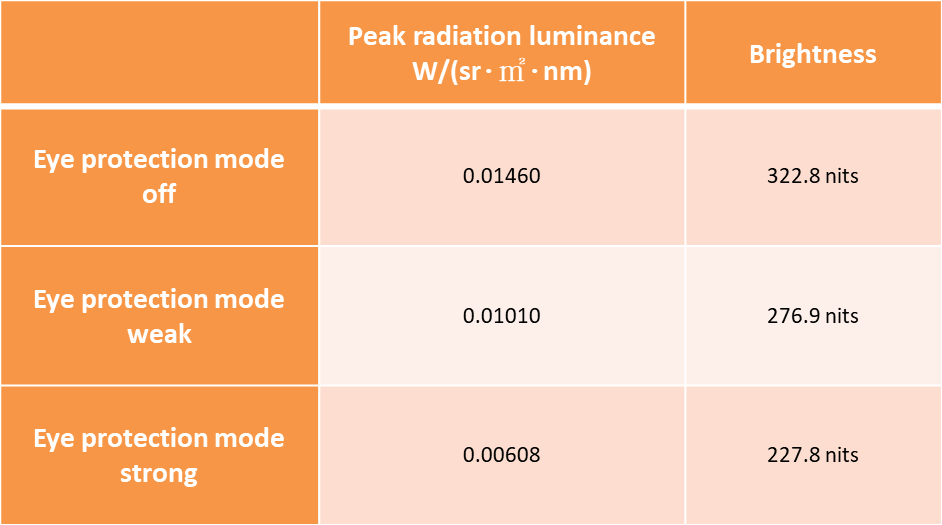
Furthermore, with the decreased blue light and increased red light ratios, images will also appear in a rather yellow tone. The reduced amount of blue light may vary for different brands, but a certain ratio standard should be maintained to avoid diverging user experiences excessively.
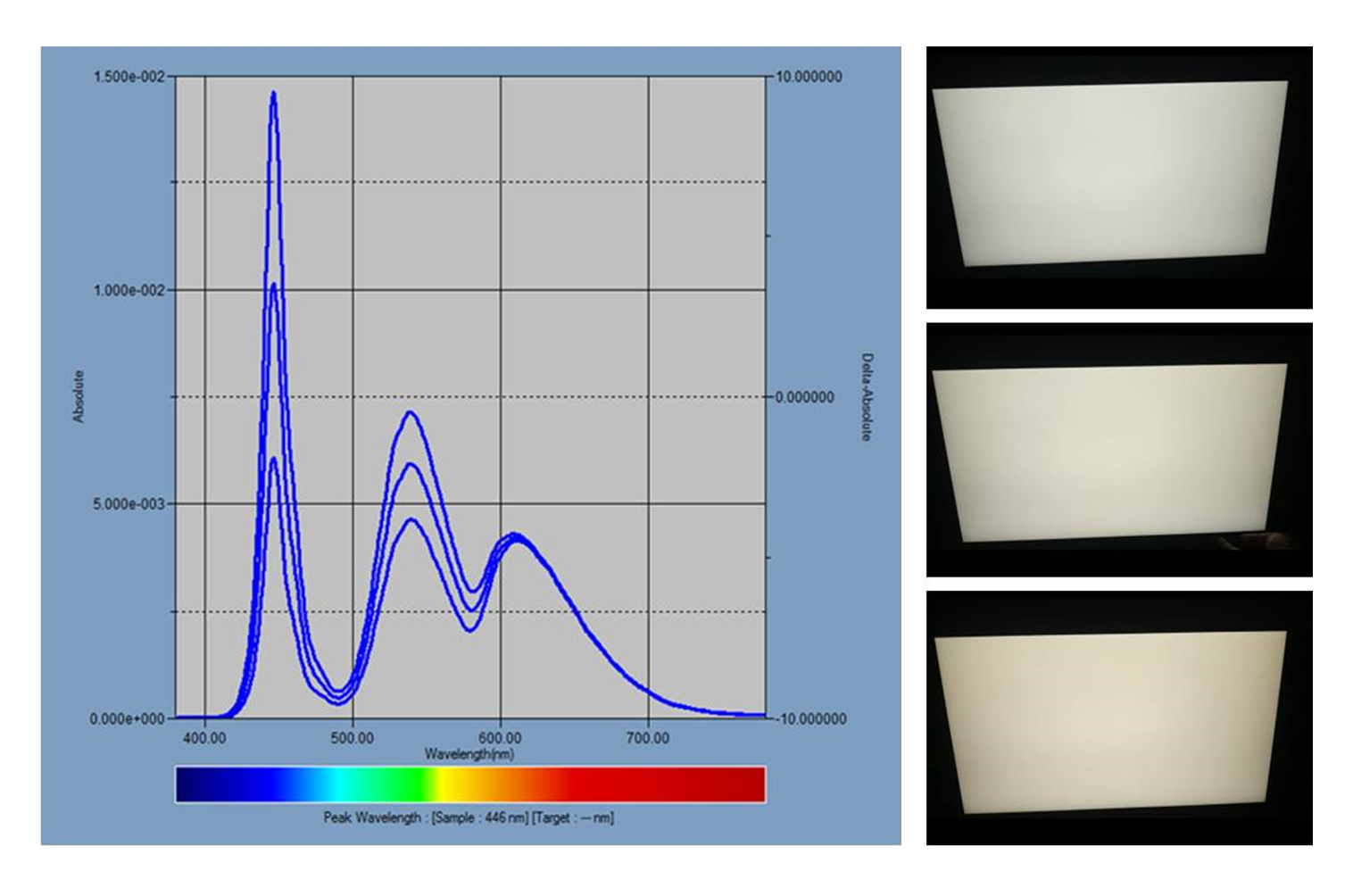
Another blue light hazard assessment method is to apply the IEC/EN62471 photobiological safety standard. In its weighted index of blue light damage to the eyes, light with a wavelength from 400nm to 500nm causes relatively high damage when compared with other wavelengths; in particular, wavelength between 415nm and 465nm is the section with the most serious damage, and wavelength between 435nm and 445nm is the section with the highest weighted damage.
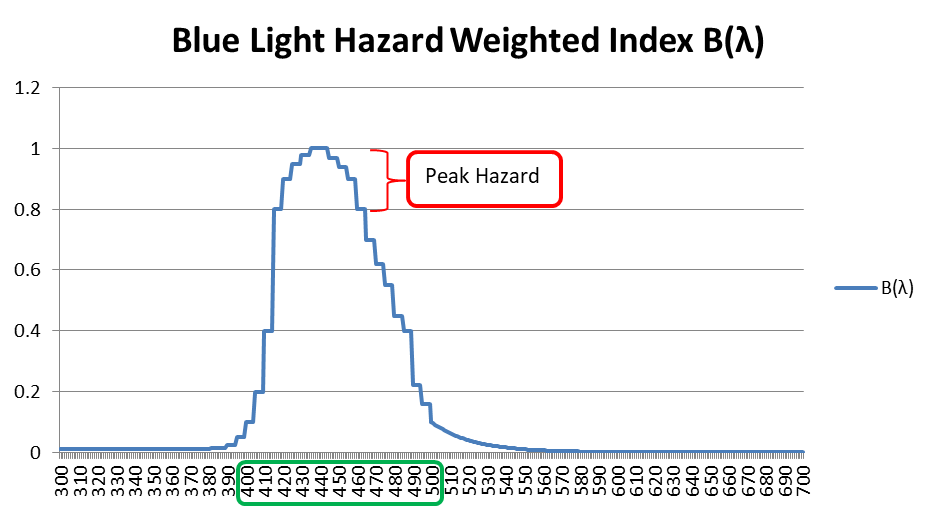
Therefore, if the intensity of the most harmful types of blue light, which are the ones with a wavelength between 415nm and 465nm, can be effectively reduced to maintain the energy under half of the total blue light energy, we can greatly diminish the hazard while offering a satisfying color display.
Let’s prove this with an actual case. As the graph with the measured display spectrum shows, lights with wavelengths from 415nm to 465nm account for 87% of the total blue light energy.
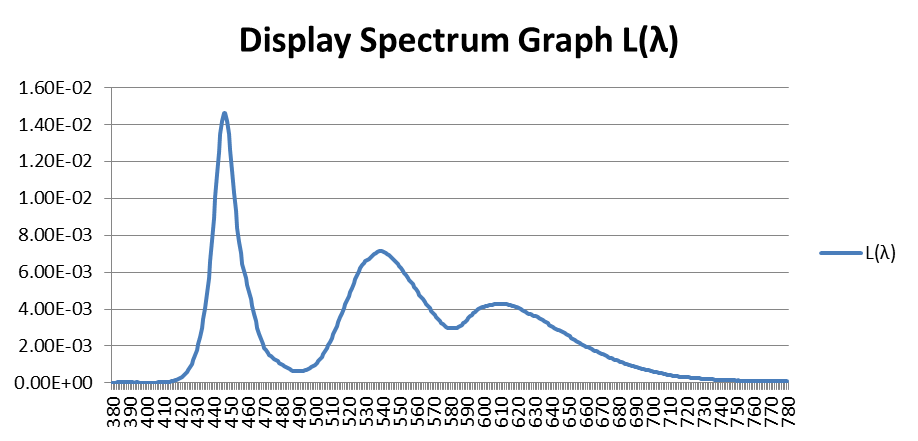
As for wavelengths from 435nm to 445nm, the section causing the most damage, they also account for 11.4% of the total blue light energy, posing a huge potential threat to eye health under long-term usage.
A decent usage environment with sufficient lighting combined with proper habits is the top strategy to maintain eye health. In addition to displays with low blue light, features such as anti-glare and low flicker are also critical indices for eye comfort.
Allion Labs possesses many years of experience in display quality verification. From product design and obtaining related certification to production management, we are ready to accompany manufacturers throughout the whole process as your strongest support.
If you are interested in our testing services, please contact Allion Labs.

































